Dick Smith System 80 video problem: Another one!
Introduction
Before acquiring a few more units in the System 80 haul, I'd just finished refurbishing an old parts-machine into something quite reasonable. The 16k machine had started out with a video fault, which I'd repaired. In a growing fit of enthusiasm I didn't stop there but went on to fix the cassette recorder, make some modifications and generally spruce the unit up.
I'd been using this machine to assist me to diagnose the RAM expansion box problem when suddenly the screen image flickered, and turned into what you can seen in figure 1. Uh oh. This was a DIFFERENT video fault than last time. Much more dramatic! Switching off and on again didn't clear the problem. Obviously something had gone kaput. But what?
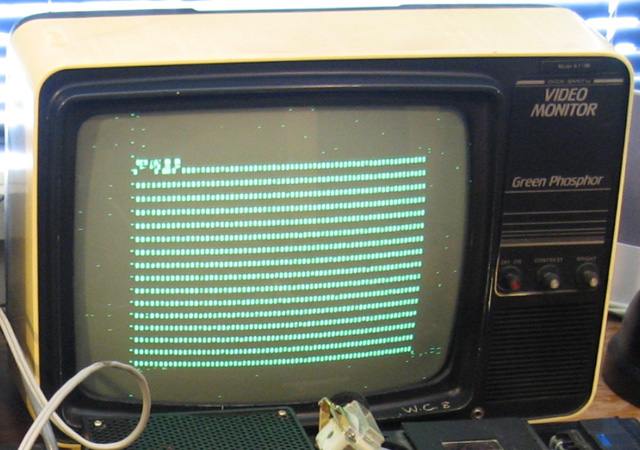
Figure 1. The fault. Where there should be characters, there were now blocks.
Tracing the fault.
I had blocks of light on the screen but they moved in an expected way during keyboard input. My first thought was the fault lay with either the video RAM or the character generator (CG) IC. Hopefully, it wasn't the latter as I had no more of these "lower case" ones left in the spare parts bin! Anyway as both the video RAM and the CG were socketed a quick swap-out would prove one way or another.
It did. It was neither of them!
Despite this I was feeling quite confident I could find the fault. The problem was definitely the video circuit and it would be a matter of checking this with a scope. I had a working System 80 so I could simply compare signals until something looked odd.
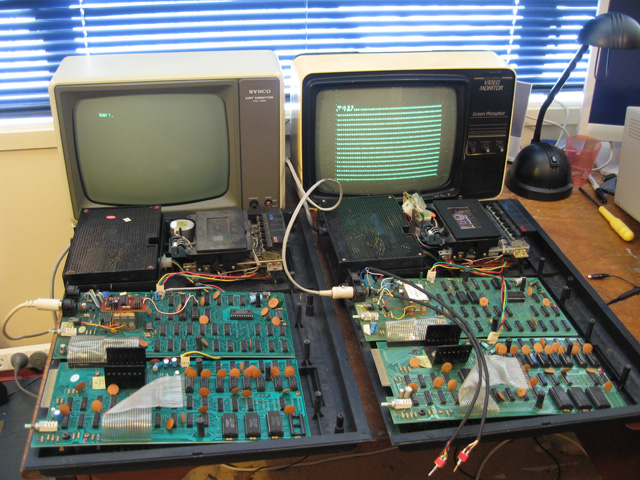
Figure 2. The faulty machine and its working companion
The first thing I did was to check all the pins on the character generator (Z25 in figure 3), and compare them with signals on a good unit. The technique involved taking a photo of the scope display on every pin, then checking these pictures against the scope placed on the same pins in the good machine. I soon found a difference. Pins 14, 15, 16 and 19 were all showing a contrasting signal. These were input lines to the CG. What ICs were they coming from and was there a common thread?
I found one. Z3 fed the CG directly, through its output pin 3 and indirectly through Z2 and Z24. Z3 was the common IC so might be the villain. I checked the pins on this chip using the same photograph and compare technique that I'd used before. Yes, there were some obvious differences and they were telling. All the input lines were the same, but most of the output lines differed greatly!
It had to be this one!
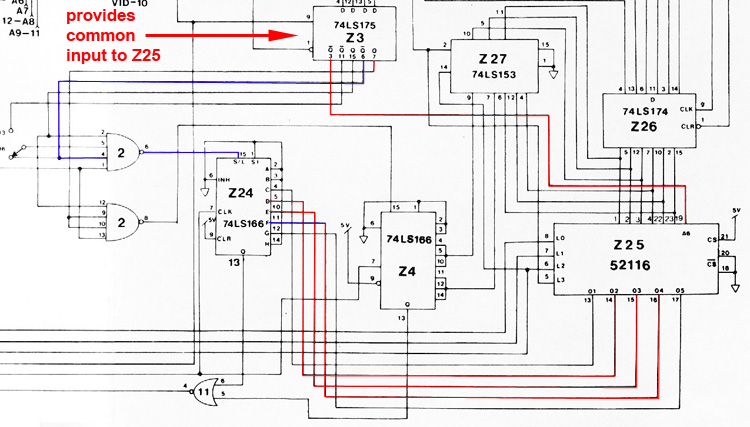
Figure 3. Schematic showing the faulty input lines to the character generator (Z25) and the common IC (Z3)
The fix
It WAS that one. In fact (and lucky for me), Z3 was ALREADY in a socket, due to an (unnecessary) replacement in the previous video fault investigation. A quick replacement (of the replacement!) and the machine was working again. Total time diagnosing and fixing the problem, about 40 mins!
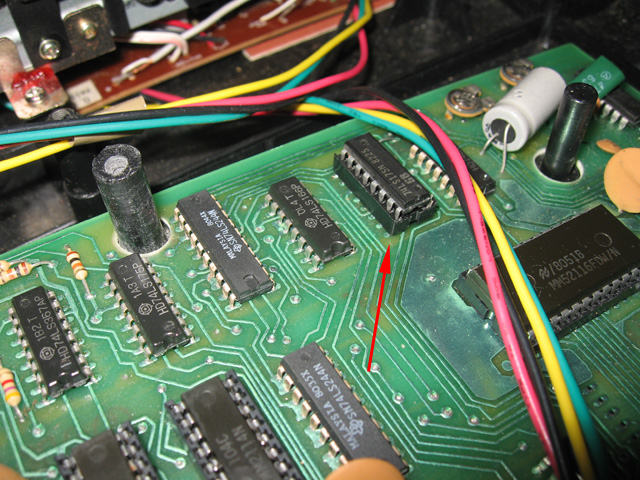
Figure 4. Replacement 74LS175 IC
Reflections
In the end this repair was relatively straightforward. However, the reason it WAS easy was due to a few factors:
- The symptom pointed strongly to just one part of the circuit
- I had an oscilloscope
- I had a good source of spares
- I had logic chip specs I could find easily on the web. These documents told me the input and output pins.
- I had a working machine for comparison
The latter in particular was very important. There was no way I would have known most of those outputs were irregular without having a working machine to compare them with. It shows the value of having a spare!
Another desirable thing is a box full of logic chips. I scored a number of duplicate cards in the Apple haul (80 column cards, disk cards etc.). Almost every chip is socketed providing a great source of spare parts for many of my machines!
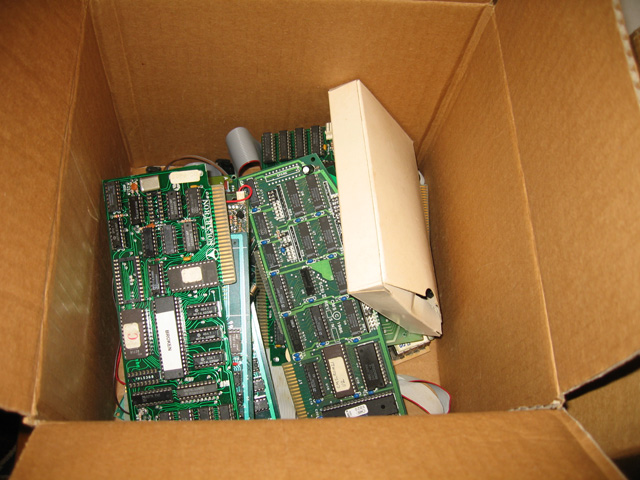
Figure 5. Old Apple II cards. A great source of spare TTL logic chips.
Tez
27th October, 2010
| Tweet |